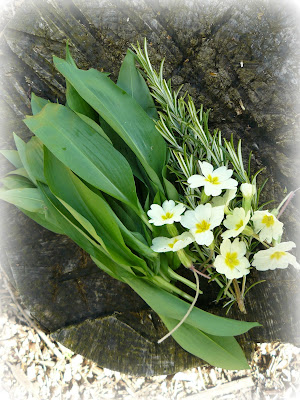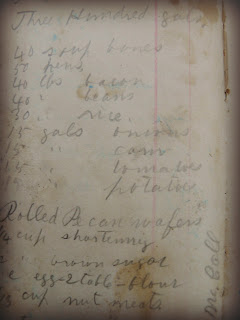No need for a dollop of cream or fancy embellishments, it was perfect as it was.
The chocolate frosting was not part of the original recipe, although almond or chocolate icing was suggested.
I used my all-time favourite chocolate icing recipe, which is taken from an old book entitled, Tea with the Bennets of Jane Austen's Pride and Prejudice by Margaret Vaughan.
The cake recipe, just as it is written in my book:
Four ounces of butter, six ounces of sugar, eight ounces of flour, two ounces of ground chocolate, two large eggs or three small ones, half a teacupful of milk, one teaspoonful of baking powder, half a teaspoonful of ground cinnamon, a few drops of vanilla. Beat the butter and sugar to a cream, add the eggs well beaten, with a little flour, mix thoroughly; dissolve the chocolate in the milk on the fire, add to the other ingredients. Bake one hour, or until quite firm. This cake is much improved if iced with almond or chocolate icing.
I used some really good quality cocoa powder which I had been given, in place of the ground chocolate, and mixed it with 150 ml of boiling milk, making a stiff paste. I also substituted self-raising flour for plain but I still used the teaspoonful of baking powder. I used two 8" cake tines with baking parchment lining the bases. I baked them at 180 degrees for about 30 minutes, but do check your cakes and use your own judgement.
Allow the cakes to cool and then sandwich together with a good layer of jam, or if you are really into chocolate, you could use more chocolate icing.
Now, that chocolate icing - dark, full of chocolate and exceedingly easy to apply - even for someone like me. It takes the stress out of icing and yet gives a great finish and an excellent taste.
3 oz icing sugar
1 oz cocoa (use really good quality cocoa)
1 1/2 oz butter
2 tbspns water
2 oz castor sugar
1/2 tsp vanilla extract
Sift the icing sugar and cocoa into a basin. Put the butter, water, caster sugar and vanilla into a saucepan and stir over a low heat. Just bring to the boil and remove from the heat at once. Pour into the middle of the dry ingredients and beat with a wooden spoon until smooth. Leave to cool, stirring occasionally.
Ice your cake and tuck in.
Another Victorian Chocolate Cake - tried it and it is even better than the first one.
8 oz flour
2 tsp baking powder
1/4 tsp salt
2 oz dark chocolate
8 fl oz milk
5 oz butter
10 oz soft brown sugar *
3 eggs
1 tblsp black treacle
1 tsp vanilla extract
* I didn't have enough soft brown sugar, so I used half soft brown and half molasses sugar.
Sift the flour, baking powder and salt together. Put the milk and chocolate to warm, stir, when melted and set aside to cool. Cream the butter and sugar, add the eggs one at a time and beat well. Add flour and egg alternately. Mix well then add the chocolate and milk, you will end up with a thick batter. Pour into tins and bake.
I used two 8" tins and baked the cakes at 180 degrees.
Cool on a wire rack.
Cover with that amazingly easy and totally delicious chocolate icing (above).
Scrumptious, but then my family always demolish chocolate cake.
x


















































